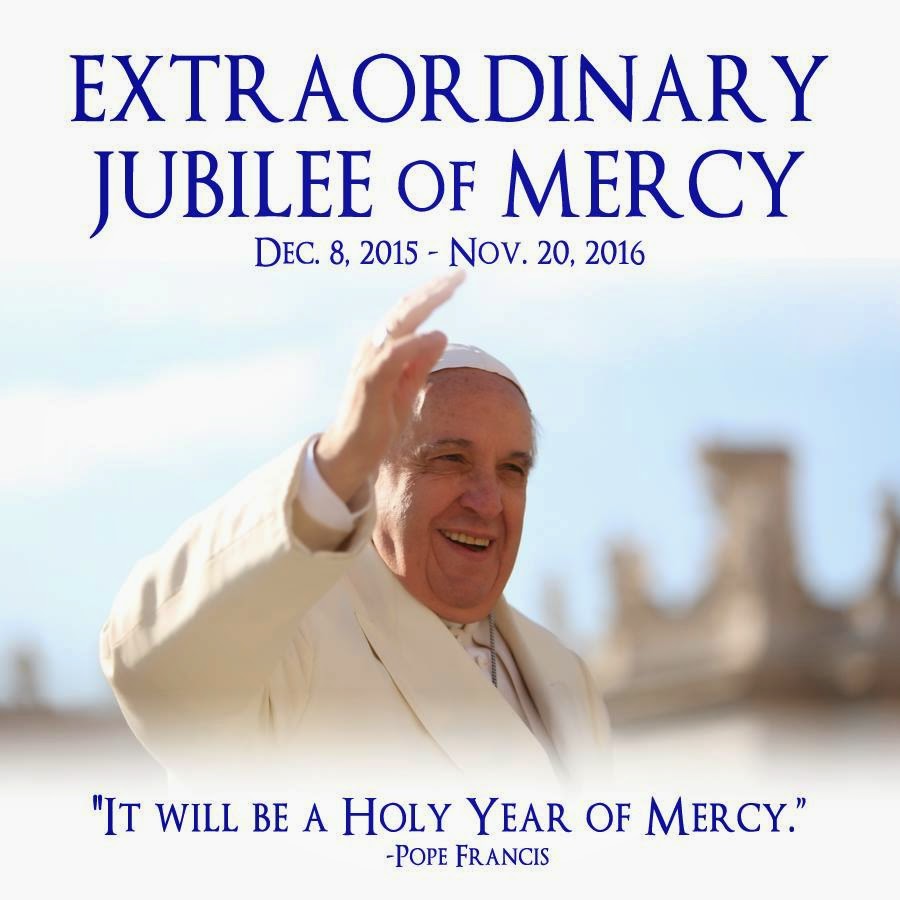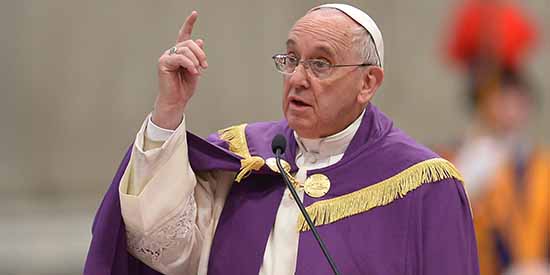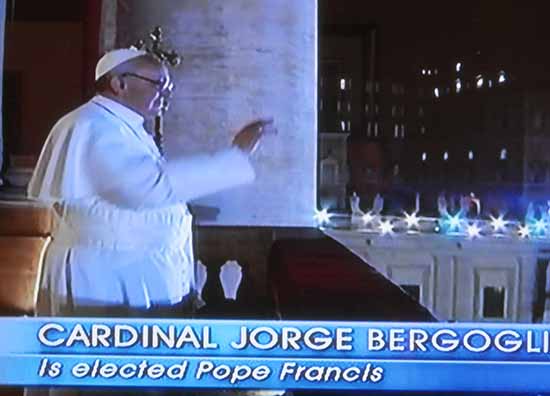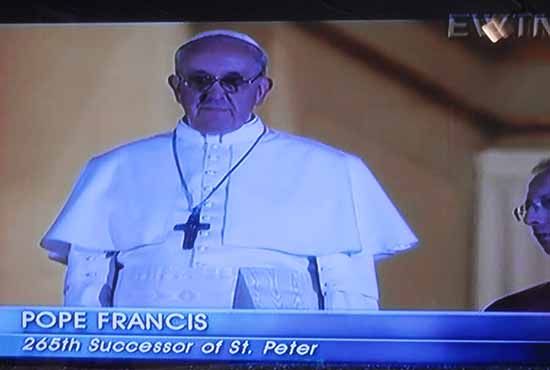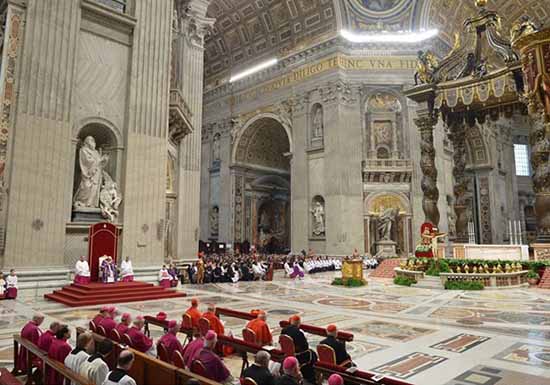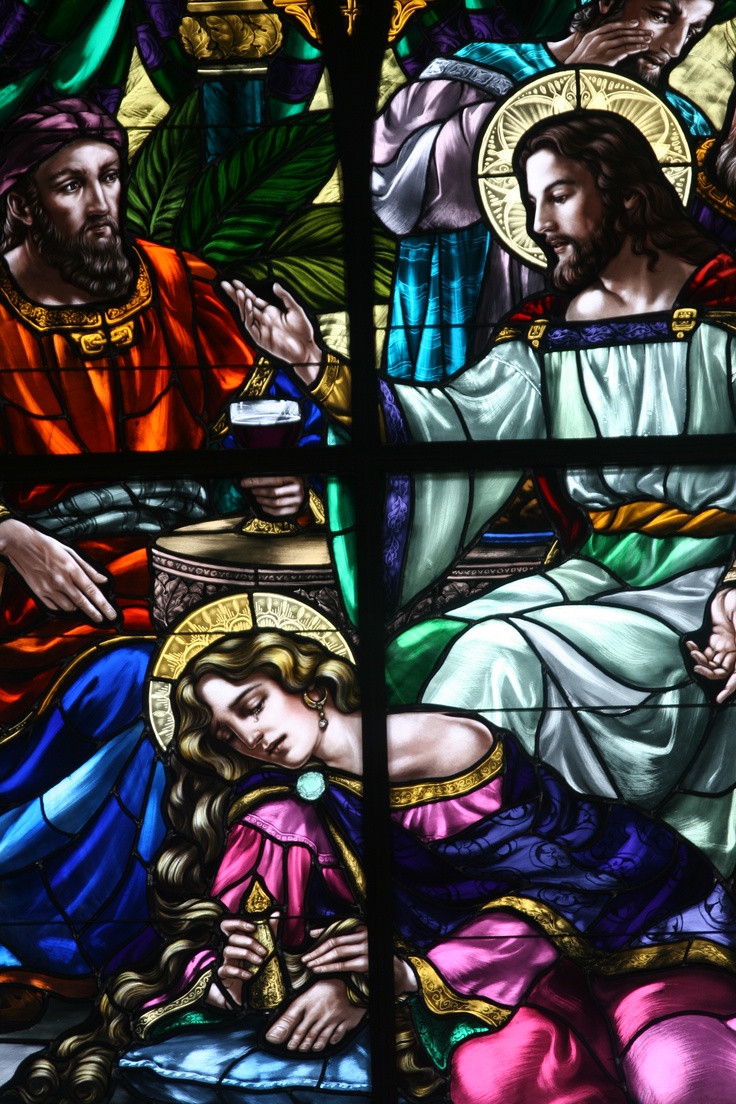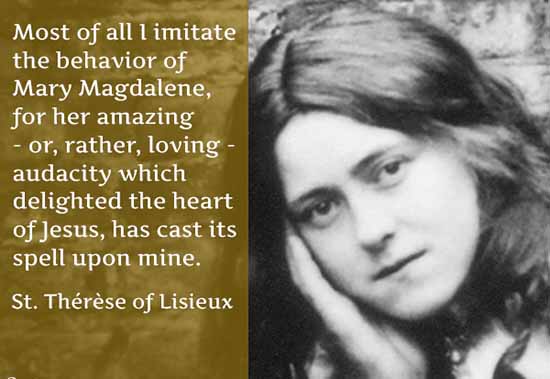Today, December 8th, the Holy Year of Mercy will begin with Pope Francis overseeing the opening of the Holy Door, an entrance in St. Peter’s Basilica in Rome that is sealed, apart from during holy years.
“I will have the joy of opening the Holy Door on the Solemnity of the Immaculate Conception. On that day, the Holy Door will become a Door of Mercy through which anyone who enters will experience the love of God who consoles, pardons, and instills hope.” wrote Pope Francis in his “Misericordiae Vultus” (Latin: “looking for mercy”), the papal bull officially proclaiming the Holy Year.
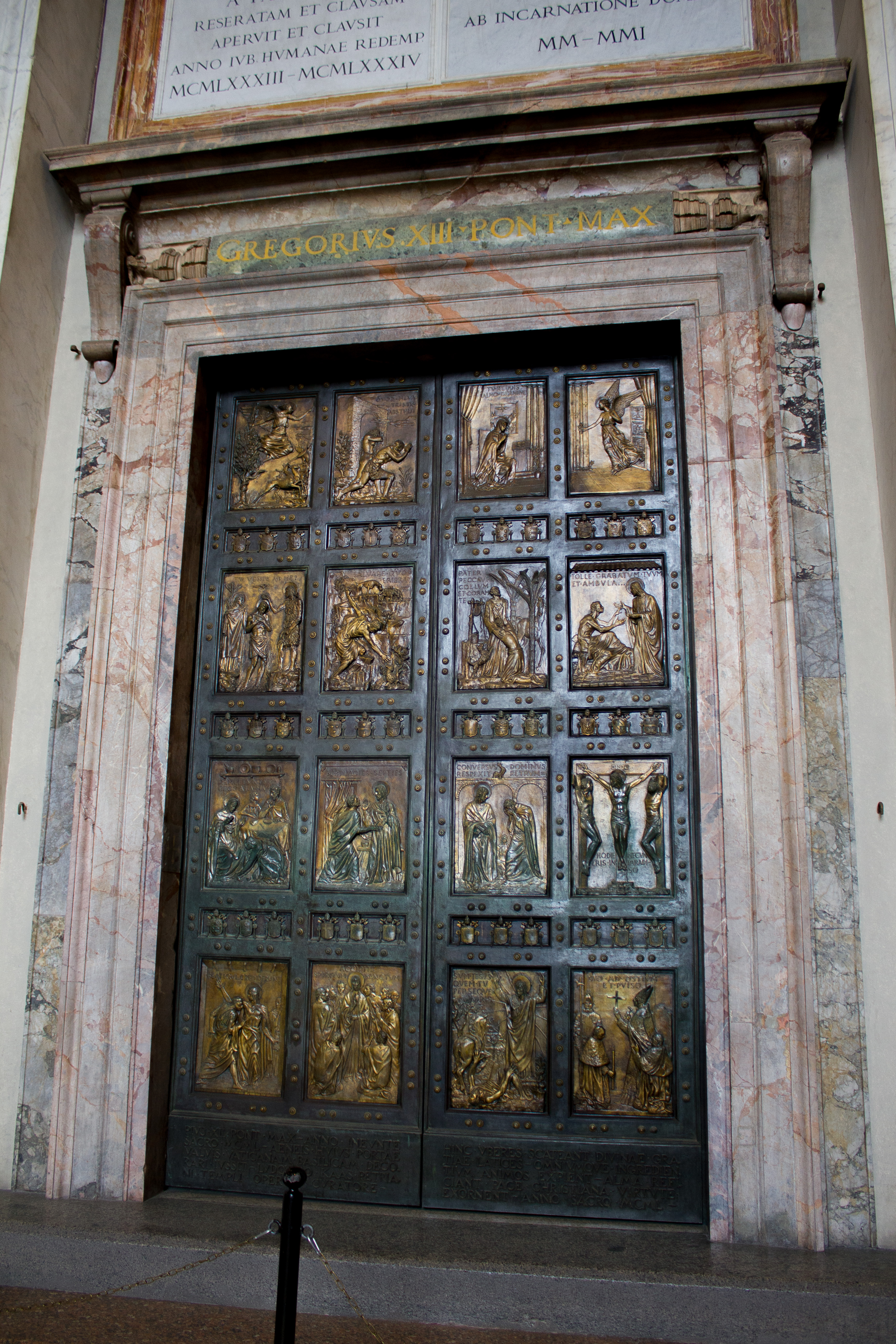 Holy Door at St. Peter’s Basilica in Rome
Holy Door at St. Peter’s Basilica in Rome
One way the pope wants to show “the church’s maternal solicitude” is to send out “missionaries of mercy” — that is, specially selected priests who have been granted “the authority to pardon even those sins reserved to the Holy See.
In a letter, Pope Francis expressed empathy with women who have abortions, calling theirs an “agonizing and painful decision.” During this “Jubliee of Mercy” year, he wrote, all priests would be empowered to “absolve the sin of abortion” for those who seek forgiveness with “a contrite heart.”
Pope Francis is calling on each one of us to be “patient and merciful” towards one another.
“He is inviting us to get beyond the thickets of judgment and conflict that can characterize our lives. ‘Mercy’ is the word for the year. Mercy is our passport to freedom from old wounds. Mercy is our help with unfinished business, resentments and revenge that stifle our souls.” wrote Msgr. Robert McNamara to his parishioners at St. Bernardine of Siena in Woodland Hills, California, ending the letter with, “Let us heed the Pope and treat one another, in this Holy Year, with bountiful mercy.”
.
Official Announcement
Holy Year of Mercy or Jubliee of Mercy was announced in a homily Pope Francis gave at St. Peter’s Basilica in Rome on Friday March 13, 2015, exactly two years from the day he was chosen as Pope.
I remember well the day he became Pope. We were at St. Mark Parish in Peoria, Illinois during the 2013 Relic Tour, crowded around the TV waiting in great anticipation to find out who would be our new Pope. I took photos of the TV as the events unfolded….
I loved him immediately because he chose the name “FRANCIS.” Francis of Assisi was my first special saint. We even named one of our sons after the holy man of Assisi who was so kind to the poor.
As I have gotten to know Pope Francis…. I love him more.
.
Holy Year of Mercy announcement
“Dear brothers and sisters, I have often thought about how the Church might make clear its mission of being a witness to mercy. It is journey that begins with a spiritual conversion. For this reason, I have decided to call an extraordinary Jubilee that is to have the mercy of God at its center. It shall be a Holy Year of Mercy. We want to live this Year in the light of the Lord’s words: ‘Be merciful, just as your Father is merciful. (Luke 6:36)'”
Pope Francis at St. Peter’s Basilica during his homily
March 13, 2015
.
Gospel opens for us a path of hope and comfort
It is the Gospel of Luke (Chapter 7:36-50), A Sinful Woman Forgiven, of which Pope Francis reflects.
Pope Francis’ homily
“The Gospel we have heard opens for us a path of hope and comfort. It is good that we should feel that same compassionate gaze of Jesus upon us, as when he perceived the sinful woman in the house of the Pharisee. In this passage two words return before us with great insistence: love and judgment.
There is the love of the sinful woman, who humbles herself before the Lord; but first there is the merciful love of Jesus for her, which pushes her to approach. Her cry of repentance and joy washes the feet of the Master, and her hair dries them with gratitude; her kisses are pure expression of her affection; and the fragrant ointment poured out with abundance attests how precious He is to her eyes. This woman’s every gesture speaks of love and expresses her desire to have an unshakeable certainty in her life: that of being forgiven. And Jesus gives this assurance: welcoming her, He demonstrates God’s love for her, just for her! Love and forgiveness are simultaneous: God forgives her much, everything, because ‘she loved much’ (Luke 7:47); and she adores Jesus because she feels that in Him there is mercy and not condemnation. Thanks to Jesus, God casts her many sins away beyond Him, He remembers them no more (Isaiah 43:25). For her, a new season now begins; she is reborn in love, to a new life.
This woman has really met the Lord. In silence, she opened her heart to Him; in pain, she showed repentance for her sins; with her tears, she appealed to the goodness of God for forgiveness. For her, there will be no judgment except that which comes from God, and this is the judgment of mercy. The protagonist of this meeting is certainly the love that goes beyond justice.
Simon the Pharisee, on the contrary, cannot find the path of love. He stands firm upon the threshold of formality. He is not capable of taking the next step to go meet Jesus, who brings him salvation. Simon limited himself to inviting Jesus to dinner, but did not really welcome Him. In his thoughts, he invokes only justice, and in so doing, he errs. His judgment on the woman distances him from the truth and does not allow him even to understand who the guest is. He stopped at the surface, he was not able to look to the heart. Before Jesus’ parable and the question of which servant would love his master most, the Pharisee answered correctly, ‘The one, to whom the master forgave most.’ And Jesus does not fail to make him observe: ‘Thou hast judged rightly. (Luke 7:43)’ Only when the judgment of Simon is turned toward love: then is he in the right.
The call of Jesus pushes each of us never to stop at the surface of things, especially when we are dealing with a person. We are called to look beyond, to focus on the heart to see how much generosity everyone is capable. No one can be excluded from the mercy of God; everyone knows the way to access it and the Church is the house that welcomes all and refuses no one. Its doors remain wide open, so that those who are touched by grace can find the certainty of forgiveness. The greater the sin, so much the greater must be the love that the Church expresses toward those who convert.”
Pope Francis at St. Peter’s Basilica, Rome
March 13, 2015
.
The Jubilee in Church History
A jubilee year is a special year called by the church to receive blessing and pardon from God and remission of sins. The Catholic church has called jubilee years every 25 or 50 years since the year 1300 and has also called special jubilee years from time to time, known as extraordinary jubilee years.
The last jubilee year was held in 2000 during the papacy of Pope John Paul II and was known as “the Great Jubilee.” The last extraordinary jubilee year was held in 1983 to celebrate 1,950 years since the death and resurrection of Jesus.
From the beginning:
1300—On Christmas 1299, in the wake of much suffering from war and plague, many people came to Rome, to repent at the tombs of Sts. Peter and Paul. In response, Pope Boniface VII proclaimed a “year of forgiveness of all sins”. 1300 was thus the first ordinary Jubilee year.
1350—While the Apostolic See was in Avignon, France (1305-1377), Pope Clement VI called for a Jubilee every fifty years, marking 1350 as the time for the second. He also added St. John Lateran to the Basilicas of Sts. Peter and Paul to be visited by jubilee pilgrims. Pope Urban VI increased the frequency of Jubilees to every thirty-three years, according to Our Lord’s span of life on earth.
1390—Accordingly Pope Boniface IX opened the Holy Door Christmas Eve 1390.
1400—But the number of pilgrims was so great he called another Holy Year in 1400.
1425—Pope Martin V proclaimed a Holy Year twenty-five years later (rather than thirty-three), with a commemorative Medal and the opening of a Holy Door in St. John Lateran.
1450—Pope Nicholas V followed suit, calling for a Holy Year in 1450, and in 1470 Pope Paul II fixed frequency at every twenty-five years.
1475—Accordingly, 1475 was proclaimed the next Holy Year by Pope Sixtus IV, who ordered the building of the Sistine Chapel and the Sixtus Bridge over the Tiber for the occasion.
1500—For the eighth Jubilee, Pope Alexander VI ordered the Doors in the four major basilicas to be opened at once, the Pope himself opening the Holy Door of St. Peter’s.
1525—The ninth jubilee was called by Pope Clement VII with the Protestant Reformation on the horizon.
1550—Proclaimed by Paul III, the next Holy Year was opened by Pope Julius III, at which St. Philip Neri was present, helping to assist with the massive influx of pilgrims.
1575—The numbers increased. In the 11th Holy Year, called by Pope Gregory VIII, as many as 300,000 pilgrims came to Rome from all over Europe.
1600—12th Jubilee, called by Pope Clement VIII
1650—13th Jubilee, called by Pope Urban VIII
1675—14th Jubilee, called by Pope Clement X
1700—To accommodate pilgrims to Rome, Pope Innocent X established the Hospice St. Michele a Ripa, one of Rome’s best known charitable institutions.
1725—Similar institutions were opened to accommodate pilgrims for the next Holy Year, called by Pope Benedict XIII.
1750—In the 17th Holy Year, called by Pope Benedict XIV, St. Leonard of Port Maurice set up the Stations of the Cross in the ruins of the Coliseum.
1775—Pope Clement XIV announced the Jubilee, but the Holy Door was opened by his successor Pope Pius VI. Pope Pius VII declined to call a Holy Year for 1800, while Napoleon ruled.
1825—More than half a million pilgrims journeyed to Rome for the 19th Holy Year, for which Pope Leo XII substituted Santa Maria in Trastevere for St Paul’s as a pilgrimage site, since the latter was being rebuilt after a fire. In 1850, unsettled conditions in Rome, with the temporary exile of Pope Pius IX, prevented calling a Holy Year.
1875—Pope Pius IX did proclaim the next Holy Year, even though the Holy Door was not opened due to the occupation of Rome by King Vittorio Emmanuele.
1900—At the 21st Jubilee, Pope Leo XIII opened the 20th century with six beatifications and two canonizations (St Jean Baptist de La Salle and St Rita of Cascia).
1925—For the next Holy Year, Pope Pius XI asked the faithful to pray for peace among peoples, in order to gain the Jubilee Indulgence.
1950—For the mid-20th century, Pope Pius XII called for the following intentions: prayer and penance for the sanctification of souls, unfailing faith in Christ and His Church, action for peace and protection of the Holy Places, defense of the Church against her enemies, prayers for faith to be given unbelievers and those in error, promotion of social justice, and assistance of the poor and needy. In the same Holy Year, the Pope defined the Assumption of Our Lady as a dogma of the Catholic Faith.
1975—The last ordinary Jubilee, called by Pope Paul VI, had two main themes, Renewal and Reconciliation, to guide the faithful toward the Third Millennium.

